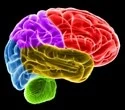
At the center of the mammalian brain, the thalamus and thalamic reticular nucleus are known to be crucial for a variety of processes, including the transmission of sensory data to the cortex and the changeover between different brain states like sleep and awake. However, changes in rhythmic brain waves that happen during sleep and pathological brain rhythms that have been seen in conditions like schizophrenia, neurodevelopmental disorders, attention deficit hyperactivity disorder, and Alzheimer’s disease have been linked to changes in thalamic neuron firing and interconnectivity.
The new Blue Brain model is the first to accurately represent the intricate structures and biophysical characteristics of 14,000 neurons coupled by 6 million synapses. It can be utilized to discovert he complexity of brain networks in terms of structure and function. The model also gives a fresh, uniting cellular and synaptic explanation of spontaneous and evoked activity in both wakefulness and sleep, replicating numerous independent network-level experimental findings across various brain states.
One of the main conclusions of the study is that inhibitory rebound, a mechanism that controls the activity of nerve cells, enhances thalamic responses at specific frequencies during awake. The model also demonstrated that variations in the excitability of thalamic cells regulate the frequency and occurrence of these spindle oscillations, which are the rhythmic brain waves noticed during sleep. Thalamic interactions produce the characteristic waxing and waning of these spindle oscillations.
This is especially important for understanding the presence or absence of anything of spindles in different brain disorders,” emphasizes first author Dr. Elisabetta Iavarone. “This approach yielded the first morphologically and biophysically-detailed model of a thalamic microcircuit, demonstrating that the modeling strategy Blue Brain developed for cortical microcircuitry can be applied to other brain regions,” adds Blue Brain Project Founder and Director, Prof. Henry Markram.





